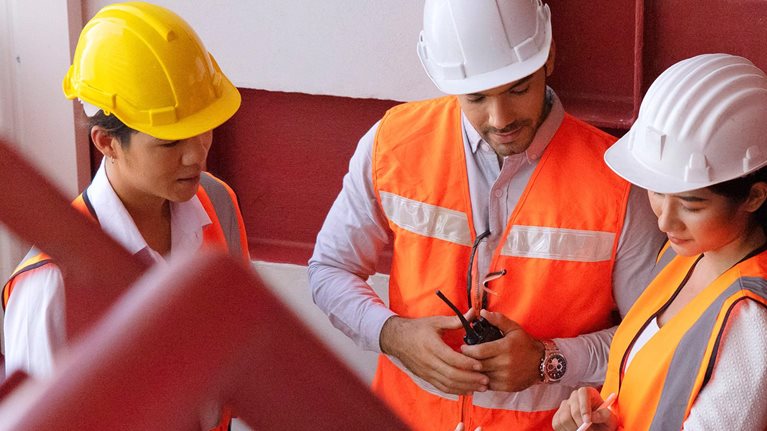The journey to net-zero emissions has begun, and it is already clear that the road will be rough. According to UN Secretary-General António Guterres, 30 million jobs in renewable energy and energy efficiency must be created by 2025, rising to 60 million by 2030.1 Assuming the delivery of planned investments, this net-zero workforce, the size of a large nation, will require the project delivery sector to grow its workforce at roughly twice the rate that it did in the five years leading up to the global outbreak of COVID-19.2
That said, the sector’s workforce is already at capacity as new construction ramps up. Recently exposed supply chain vulnerabilities have led to rapidly growing investments in semiconductor factories in Europe and the United States.3 And a recent study anticipates the CAGR for the next five years to be about 11 percent, with strong demand in both developed and emerging economies.4
A net-zero workforce is needed to deliver the net-zero portfolio
If global warming is to be limited to 1.5 degrees Celsius by 2050, work must begin now to build a net-zero workforce that is tailored to the vision and scope of the net-zero portfolio.
Leaders can drive a four-step strategy that leverages the competitive advantages of working toward net-zero emissions while overcoming past barriers to high performance (exhibit).

Harness enthusiasm
In 2017, the World Economic Forum surveyed 25,000 people aged 18 to 35, representing 186 countries. For the third year in a row, nearly half of respondents agreed that “climate change and the destruction of nature” is the most serious issue facing the world today.5
Many people want the results of their work to be important, and what can compare with working to combat climate change? Today’s workforce also wants long-term careers with job security and opportunities to advance and diversify. Work on the net-zero portfolio offers both of these things (see sidebar, “Building the net-zero workforce is an opportunity to address social goals”). That said, maintaining the carbon balance necessary to reach net-zero emissions will require capital investments long past 2050.
National Grid’s Building the net zero energy workforce report illustrates how asset owners in Europe are leveraging these advantages. Seventy-eight percent of respondents of all ages in the United Kingdom consider it important to play a part in reaching net-zero emissions, and 57 percent expressed interest in working for organizations that contribute to this goal. Among respondents aged 18 to 24 (“Generation Net Zero”), tackling climate change is the second most popular cause they want as part of their jobs (the first is helping provide education for young people). Finally, National Grid launched The Job That Can’t Wait, a recruiting campaign that shows how working with the utility was helping to tackle climate change.6
Would you like to learn more about our Global Infrastructure Initiative?
Embrace technology
Steeped in technology since childhood, the net-zero generation is attracted to career opportunities that offer technology-based learning and growth. Regrettably, the construction industry is among the least digitalized sectors, ranking last in Europe and second to last in the United States (ahead of only agriculture).7
The challenge has not been a lack of innovation—there has been no shortage of improved practices and technologies—but rather insufficiently widespread adoption. The slow uptake has caused the project delivery sector to lag far behind others in productivity improvement. Although the world economy has improved productivity by an average of 2.8 percent per year over the past 20 years, global construction productivity has improved by only 1.0 percent per year. In most advanced economies, it has not improved at all.8
The net-zero workforce must be highly productive to meet climate change goals, and widespread technology adoption can improve productivity in many ways. McKinsey’s recent mapping of the global construction technology ecosystem found that the largest areas of application are 3-D printing, modularization, robotics, digital-twin technology, AI, and supply chain optimization. These technologies are also being used to enhance project management tasks such as estimating, manpower optimization, materials management, scheduling, and risk management. Out in the field, applications are found in progress and performance dashboards, compliance assurance, and drone-enabled inspections.9
Productivity also requires minimizing or eliminating nonproductive activities, such as waiting for materials or information, redoing work, or dealing with ineffective supervision. Furthermore, design process applications are enabling disciplines to be more highly integrated to reduce nonproductive time and improve efficiency.
Safety can be better assured when every person across the project delivery ecosystem has a safety-driven mindset as well as the skills and tools to implement best practices. On this point, technology has a clear role to play in improving construction safety. Examples include using wearable technology to track someone’s location and using cell phones for immediate notification if an incident occurs. Similarly, productivity improvement techniques, such as modularization and advanced 3-D modeling, can help. Technology-enhanced training methods can greatly improve safety awareness and skills. For example, the virtual work environment offers a safe way to provide training for potentially hazardous areas, as well as to learn safety practices by experiencing accident risk scenarios in real time.

Voices on Infrastructure: Building resilient infrastructure supply chains
Standardize work
The global scope and decades-long time span of net-zero investments can enable portfolio strategies that will have a profound impact on productivity.10 Perhaps the most effective of these is standardization.
Standardization enables rapid upskilling, consistently high and continuously improving engineering and construction productivity, an attractive investment climate for expanded manufacturing and assembly facilities, and the critical mass of applications needed for rapid implementation of new technologies. It also facilitates modularization and prefabrication, enabling production to be moved from construction sites to indoor facilities where higher levels of quality, safety, and productivity can be achieved.
Standardized designs provide the basis for cross-functional integration during the design process, resulting in standardized work packages that can drive continuous improvements in productivity. These standardized work packages also enable lean construction, which leverages collaboration via integrated planning and performance management to reduce waste and optimize execution efficiency.11
Build skills
The net-zero workforce would provide opportunities across the project delivery ecosystem, including asset owners and operators, engineering and construction contractors, providers of technology-driven solutions, and materials suppliers using green technologies. While conventional engineering, manufacturing, project management, construction, and operations skills will still be in demand, new technology-driven skills—particularly related to AI, data analytics, and digital design—will be as well. As the industry becomes more driven by technology and automation simplifies rote tasks, opportunities for higher-skilled positions are likely to increase, with the bonus of enabling entry-level team members to be more productive.
Standardization and technology combine to create numerous pathways for rapidly acquiring new skills. According to a research report from the Construction Industry Training Board (CITB), immersive learning is revolutionizing skills acquisition.12 By fully involving trainees in a realistic, interactive, and digital environment, immersive learning helps trainees acquire key skills, such as operating a crane or scaling a wind turbine, quickly and in ways that appeal to young people.
For those already engaged in the industry, building the net-zero workforce can provide opportunities for reskilling. For example, as the energy sector transitions from oil and gas to clean and renewable energy, process-engineering skills can be redeployed to design carbon capture, utilization, and storage (CCUS) facilities. Similarly, offshore engineering skills can be applied directly to the design of fixed and floating offshore wind installations, and gas-processing skills can be applied to the latest hydrogen technologies.
With the planet on the road to net-zero emissions, progress depends on how well the actors that make up the global project delivery ecosystem manage essential transformations.
Transformations are typically driven by external forces, advances in science and technology, or leaders seeking to improve performance. Climate change provides the call to action; science and technology provide the means; and leaders across the globe can provide new public, financial, and delivery strategies to ensure that the capacity to deliver these projects will not only have an impact on the tens of millions of people joining the industry— but also transform it into the high-performing engine of progress that the world needs today.
This article is part of Global Infrastructure Initiative’s Voices on Infrastructure.
This article is the third in a series of five covering the challenges of delivering the net-zero portfolio and exploring the transformational opportunities it presents. It follows “Capturing the net-zero opportunity with portfolio synergies,” which was published in April. Please check McKinsey.com in August for the next two articles in the series, which discuss how to ensure bankability and progress on Sustainable Development Goals.


